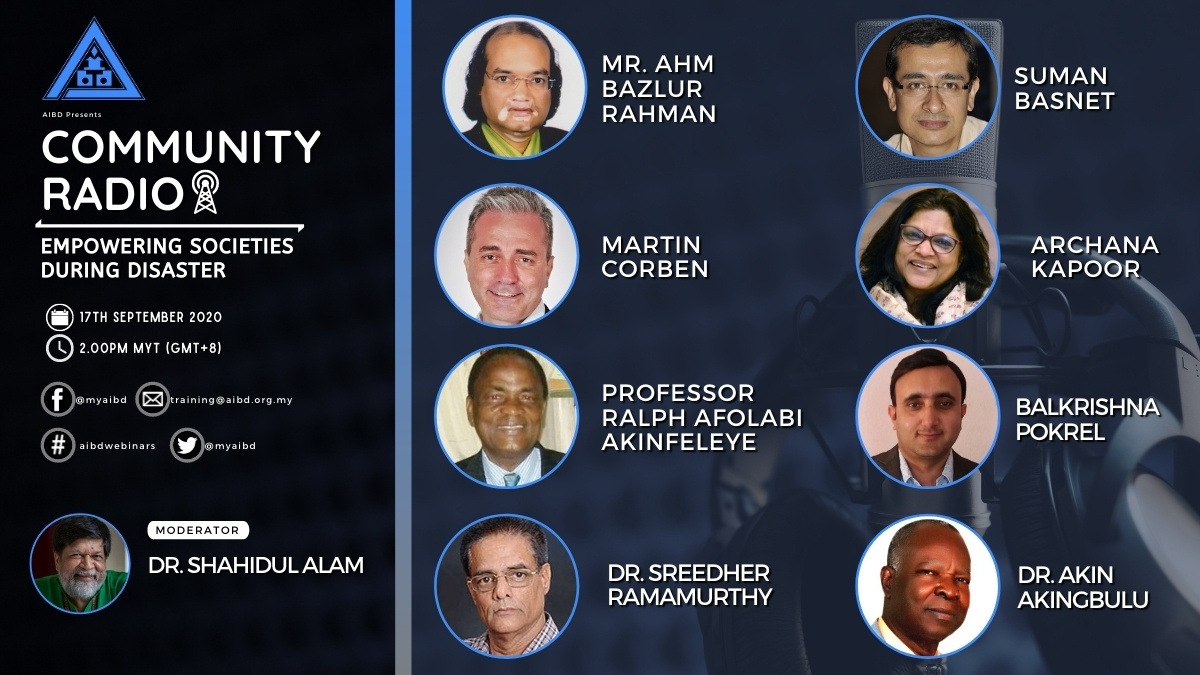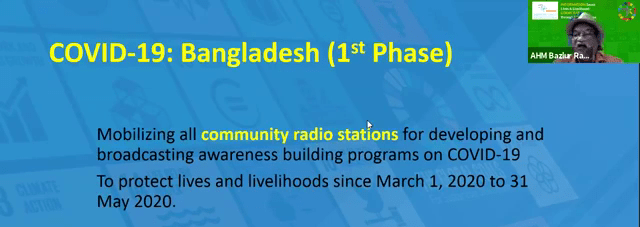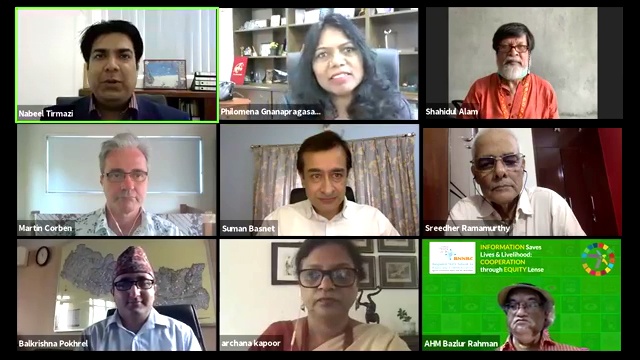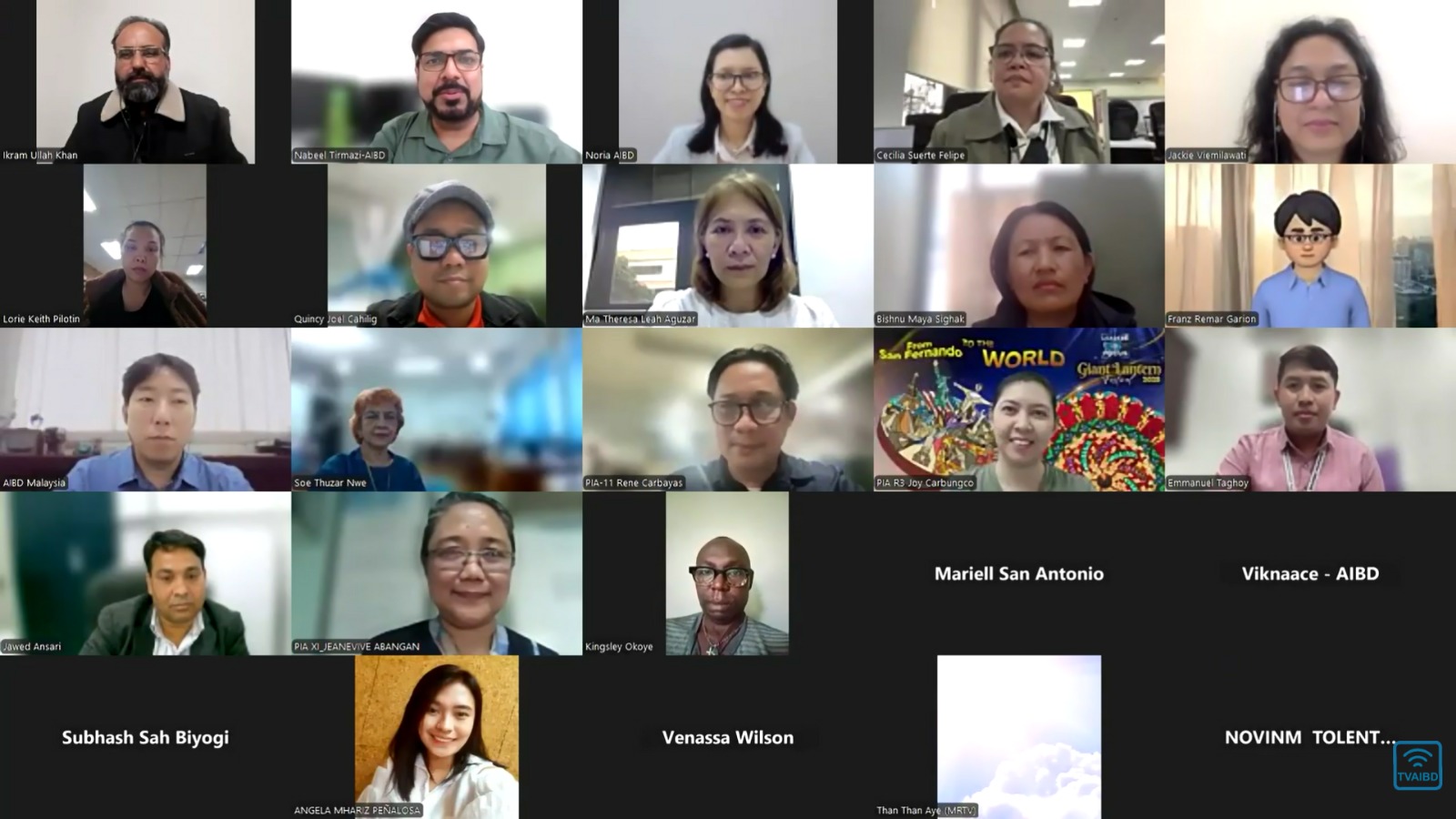
Community Radio: Empowering Societies During Disasters

Community radio has always proved to be an effective medium for the development of the unprivileged communities. In recent times, Community Radio (CR) has proved to be a great bridge for information and communication to the remote, marginalized, and the most vulnerable communities. Being an economical medium, its portability adds value not only in reaching but giving voice to the unheard.
In 2020, where the COVID19 pandemic exposed many vulnerabilities of social institutions, community radio stood in the front line to cope up with the challenges of disinformation and raising awareness to fight in these unprecedented times.
Over 75 media practitioners from 18 countries joined the AIBD’s webinar on Community radio on 17th September 2020. AIBD engaged speakers from Australia, Bangladesh, India, Nepal and Nigeria to share their knowledge and case studies with the attendees. The 3-hour event focused on the role of community radio in various countries during disasters and how this institution dealt with the recent global pandemic lockdown.
During the opening remarks, Ms Philomena Gnanapragasam, Director, AIBD, said that, Radio is the theatre of the mind, though being a traditional medium it still withstood time and it has become stronger with the evolution of technology. Though globally, community radio stations are low on resources but they have deep roots and have more penetration in their communities, which make them a significant media.
Renowned humanitarian writer and photographer Dr Shahidul Alam from Bangladesh moderated the event. He also said that in an image-saturated world, radio still proves to be an important medium to disseminate content to the masses.

Mr AHM Bazlur Rahman, CEO, BNNRC, talked about how Bangladesh mobilized all the community radio stations to develop awareness-building programmes on COVID19. He also mentioned about the Government’s initiatives to mobilize community radio to collaborate with government departments, CSOs, and communities.
 Dr Sreedhar Ramamurthy from India delivered his presentation on the role of community radio and disaster management. He mentioned that in India, community media has always been proactive during disasters like cyclones, tsunami, floods, and even during the pandemic of COVID19. He discussed various strategies that Indian community media adopted to ensure their connectivity during vulnerable times.
Dr Sreedhar Ramamurthy from India delivered his presentation on the role of community radio and disaster management. He mentioned that in India, community media has always been proactive during disasters like cyclones, tsunami, floods, and even during the pandemic of COVID19. He discussed various strategies that Indian community media adopted to ensure their connectivity during vulnerable times.
 Mr Suman Basnet, regional Director, AMARC from Nepal, talked about the aftermath of the pandemic on community radio. Mr Basenet said that while the pandemic is far from over, its consequence on community radio is visible and severe. He highlighted that community radio journalists worked as the front liners during these unprecedented times, but they suffered enormous setbacks in terms of income, logistics, and human resources. He emphasized on the fact that Governments should have formal policies on emergency broadcasting as well as for social inclusion. He ended his presentation by stating, “Wearing a mask is important, but let it not block our voice!”.
Mr Suman Basnet, regional Director, AMARC from Nepal, talked about the aftermath of the pandemic on community radio. Mr Basenet said that while the pandemic is far from over, its consequence on community radio is visible and severe. He highlighted that community radio journalists worked as the front liners during these unprecedented times, but they suffered enormous setbacks in terms of income, logistics, and human resources. He emphasized on the fact that Governments should have formal policies on emergency broadcasting as well as for social inclusion. He ended his presentation by stating, “Wearing a mask is important, but let it not block our voice!”.
 Mr Martin Corbin, a media consultant from Australia, talked about the challenges and potential of emergency coverage where he shared the case study of Australia’s recent tragedies of bushfires and how community radio reacted to it. He mentioned that during that period over 80 stations were at any one time were under threat or undertaking some form of emergency broadcasting. He also highlighted that during that period, the listenership of community radio increased significantly, as listeners wanted to know more about localized news and to listen to local voices.
Mr Martin Corbin, a media consultant from Australia, talked about the challenges and potential of emergency coverage where he shared the case study of Australia’s recent tragedies of bushfires and how community radio reacted to it. He mentioned that during that period over 80 stations were at any one time were under threat or undertaking some form of emergency broadcasting. He also highlighted that during that period, the listenership of community radio increased significantly, as listeners wanted to know more about localized news and to listen to local voices.
 Mr Balakrishana Pokhrel, Executive Director of ACORAB Nepal, shared the experiences of community radio broadcasters during the disasters in Nepal in recent years. He showcased his case study that how CRs played a bridge role between victims and authorities during the earthquake 2015 and then in floods. He mentioned the role of ACORAB during COVID19, where the association constantly conducted policy advocacy and capacity development for its member broadcasters.
Mr Balakrishana Pokhrel, Executive Director of ACORAB Nepal, shared the experiences of community radio broadcasters during the disasters in Nepal in recent years. He showcased his case study that how CRs played a bridge role between victims and authorities during the earthquake 2015 and then in floods. He mentioned the role of ACORAB during COVID19, where the association constantly conducted policy advocacy and capacity development for its member broadcasters.
 Ms Archana Kapoor, founder of Mewat radio from India delivered her presentation showcased her case study on a small city ‘Mewat’ and how community radio was able to raise the awareness among masses to combat COVID19. Apart from broadcasting awareness-based programmes, Radio Mewat also ran a campaign on digital media literacy.
Ms Archana Kapoor, founder of Mewat radio from India delivered her presentation showcased her case study on a small city ‘Mewat’ and how community radio was able to raise the awareness among masses to combat COVID19. Apart from broadcasting awareness-based programmes, Radio Mewat also ran a campaign on digital media literacy.
Professor Ralph Akinfeleye, Chairman of the mass communication department of the University of Lagos from Nigeria, also termed as the father of community radio in Nigeria, talked about the history of community radio in Nigeria. He also mentioned that during COVID19, local community radio stations translated the information about the pandemic to avoid any severity of disinformation.
Dr Akin Akingbulu, Executive Director of Institute for Media and Society, Nigeria highlighted various strategies that how community radio stations can minimize the impact of disasters by acting proactively. He also mentioned that sometimes the localized disasters are not highlighted in the mainstream media, thus the role of community radio becomes more evident to safeguard its audience by disseminating relevant precautions.
The participants were quite pleased to have such information-packed session where they witnessed contemporary strategies to empower community radio and how it can use the power of the new media. During the Q&A session many of them had this idea that this was a timely effort by AIBD and traditional broadcasters should also learn from the engagement techniques used by community media. AIBD will organize more in-depth workshops on this subject for its members in near future.







